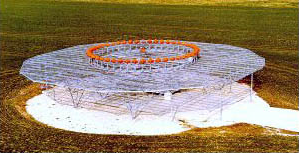Ground-based navigation aids (NAVAIDs) consist of the Non-Direction Beacon (NDB), which is an omni directionally transmitted signal, Very High Frequency Omni-Directional Ranging (VOR), which is a rotating signal and Distance Measuring Equipment which is an omni-directionally pulsed signal in response to an interrogation pulse.


The NDB is over 70 years old and is not considered accurate enough to support any PBN operations.
The VOR which is over 60 years old can enable a position estimation which is good enough to support a low demanding navigation specification. This specification is RNAV 5; the expected performance of the aircraft is +/- 5 NM 95% of the flight time. The VOR is unable to support more demanding levels of accuracy.
A pair of DMEs, provided they are both within range of the aircraft, can support a position estimation of approximately 0.5 NM (at best 0.3 NM). The level of precision in the position estimation is driven by the angle subtended between the received signals from the two ground. DME/DME postioning will support PBN operations down to RNAV 1.

Long Range Navigation (LORAN) has never had ICAO standards written for it and is therefore not considered.
Finally, PBN does not consider precision approach (PA) and therefore, the Instrument Landing System (ILS) and Microwave Landing System (MLS) are not navigation sensors supporting the PBN concept.

